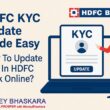You should check the Claim Settlement Ratio before buying an insurance policy. Let’s be honest — buying insurance isn’t exactly what dreams are made of. It’s not like shopping for the latest iPhone or planning your next exotic vacation. But here’s the kicker: it could be the one decision that saves your family from a financial nightmare. And while most folks are laser-focused on premiums and perks, there’s one thing they often miss — Claim Settlement Ratio.
Yep, this isn’t just another boring term tossed around by insurance agents. It’s a number that tells you if the insurer will actually have your back when things hit the fan. Whether you’re shopping for life insurance, health coverage, or anything in between, overlooking this vital stat could cost you big time.
So, what exactly is this mystical metric? Why does it matter so darn much? And how can it be the difference between peace of mind and a bureaucratic brawl? Buckle up, because we’re about to break it all down in plain, no-nonsense language.

What is the Claim Settlement Ratio?
Before we dive into the nitty-gritty, let’s start with the basics. The Claim Settlement Ratio (CSR) is a percentage — a scorecard, really — that tells you how many claims an insurance company has paid out versus how many it received in a year.
In Plain English:
Claim Settlement Ratio = (Number of Claims Settled / Number of Claims Received) × 100
So, if an insurer received 1000 claims and settled 980 of them, its CSR is 98%. That means 980 people got the help they needed, while 20 were left hanging. Doesn’t sound like much? Try being one of those 20.
Why the Claim Settlement Ratio Matters More Than You Think
You’d think all insurance companies pay out when disaster strikes, right? Well, think again. Just because you’ve paid your premiums religiously doesn’t mean your claim will be approved without a hitch.
Here’s why Claim Settlement Ratio is a BIG deal:
✅ It’s a Trust Signal
High CSR = trustworthy insurer. Low CSR = red flag. Simple.
✅ It Reflects Customer Experience
Insurers with solid CSRs are usually smoother to deal with when filing a claim — fewer headaches, less paperwork, more empathy.
✅ It Helps You Avoid Nasty Surprises
Ever heard of someone’s life insurance claim getting denied due to a “technicality”? Yeah, a healthy CSR helps reduce that risk.
Red Flags: When a Low CSR Tells a Story
A company with a low Claim Settlement Ratio might be:
- Rejecting claims due to rigid policies or fine-print traps
- Taking forever to process and settle claims
- Lacking a streamlined claims department
- Or worse — avoiding high-risk clients on purpose!
So, while a low premium might look tempting, if the CSR is in the dumps, your “cheap” policy could cost you way more in the long run.
High CSR vs. Low CSR: What’s the Benchmark?
Alright, let’s get into the numbers. What counts as a “good” Claim Settlement Ratio? While it varies slightly depending on the type of insurance, here’s a solid rule of thumb:
| CSR Percentage | Verdict |
| 95% and above | Excellent – Go for it! |
| 90–94% | Decent – Dig deeper |
| Below 90% | Risky – Proceed with caution |
Don’t get fooled by just one year’s performance either. Look at the trend over 3–5 years. A consistently high CSR shows reliability, not just a lucky streak.
Where to Find the Claim Settlement Ratio
No need to turn into Sherlock Holmes! Finding this number isn’t rocket science.
Here’s where you can spot the CSR:
- IRDAI Annual Report: India’s insurance watchdog — Insurance Regulatory and Development Authority of India — publishes this goldmine every year.
- Company Websites: Most insurers flaunt their CSR like a badge of honor (well, if it’s good).
- Insurance Aggregator Platforms: Sites like Policybazaar, Coverfox, and BankBazaar show CSR comparisons.
Types of Claim Settlement Ratios: Don’t Get Confused
Now here’s where it gets a bit technical — but stick with me. Not all CSRs are the same:
1. Individual CSR:
Based on claims from individual policyholders (like you and me).
2. Group CSR:
Based on group insurance policies like corporate plans.
When evaluating your insurance policy, focus on individual CSR. That’s the real deal for someone buying a standalone policy.
How to Use CSR to Choose the Right Insurer
Alright, now you know CSR matters. But how do you actually use this info when shopping for a policy?
Here’s your no-fluff, step-by-step game plan:
- List Down Your Top 5 Insurance Providers
- Check Their Individual Claim Settlement Ratios
- Eliminate the Ones Below 90%
- Compare the Remaining Based on Other Features (premium, coverage, add-ons)
- Look at Reviews & Customer Service Experience
- Choose the One with the Best Mix of High CSR and Suitable Features
It’s like online dating, really — don’t just fall for the looks (cheap premium); check the compatibility (CSR!).
Common Myths About Claim Settlement Ratios Busted!
Let’s clear the air on a few misconceptions floating around:
❌ “A higher CSR means faster claim settlement.”
Not necessarily. CSR tells you how many claims got approved, not how fast.
❌ “All types of insurance have the same CSR.”
Nope! Life, health, and motor insurance have different claim behaviors. Compare apples to apples.
❌ “A 100% CSR is always better.”
Sounds perfect, but dig deeper — did they reject high-value or complex claims? Sometimes, too-good-to-be-true can be just that.
Claim Settlement Ratio: Real-Life Impact Stories
Let’s throw in some true-blue examples to drive the point home.
🎭 Case 1: The Heartbreaker
Ramesh bought a cheap term life policy for just ₹300/month. The insurer had a flashy ad campaign but a CSR of only 84%. When Ramesh passed away unexpectedly, his family’s claim was denied over a “missing medical disclosure.” They got nothing.
🎯 Case 2: The Lifesaver
Priya chose a more reputed insurer with a CSR of 98%. Her claim (health insurance for a surgery) was processed within 10 days, no drama, no hidden clauses.
Moral of the story? That number isn’t just a statistic — it’s your financial parachute.
Claim Settlement Ratio vs. Solvency Ratio – Know the Difference
Wait a sec — solvency what? Don’t worry, here’s a quick crash course:
🔹 Claim Settlement Ratio:
Measures how many claims are paid.
🔹 Solvency Ratio:
Measures the company’s financial strength to pay future claims.
Both matter, but CSR tells you what happened in the past — and that’s often the best predictor of the future!
FAQs
1. Is a high Claim Settlement Ratio the only thing that matters when buying insurance?
Nope! It’s super important but should be considered along with coverage benefits, exclusions, claim process, premium, and customer service.
2. Can I trust the CSR numbers on company websites?
Cross-check with the IRDAI Annual Report. Some companies conveniently “forget” to mention the difference between individual and group CSR.
3. What’s more important – CSR or low premium?
CSR. Always. A low premium is useless if your claim gets denied when you need it the most.
4. Should I check CSR every year?
It’s smart to check it once in a while — especially if you’re planning to buy a new policy or renew an old one with changes.
5. What if an insurer has a 100% CSR? Is that good?
Maybe. But look at the number of claims processed. A company that settled 5 out of 5 claims (100%) isn’t as reassuring as one that settled 50,000 out of 51,000.
6. Does CSR apply to both life and health insurance?
Absolutely, but the ratios are often published separately. Check the category you’re buying.
7. How often is the Claim Settlement Ratio updated?
Annually. The IRDAI publishes new data every financial year.
8. Can an agent manipulate CSR data?
Some might sugarcoat the numbers. Always verify independently — don’t take their word as gospel.
9. Is there a risk in switching insurers if the CSR drops?
Yes and no. If CSR drops significantly, it’s worth exploring alternatives — but weigh it against policy terms, waiting periods, and continuity benefits.
10. Why do some insurers have lower CSRs even if they’re big brands?
Brand size doesn’t always mean fair claims. Sometimes, large insurers handle too many policies, leading to bottlenecks and inconsistent claim handling.
Conclusion
When it comes to buying insurance, don’t just go with your gut — go with the data. The Claim Settlement Ratio is the closest thing to a crystal ball you’ll get in this industry. It tells you who walks the talk and who folds when the pressure’s on.
Don’t be dazzled by low premiums, jazzy ads, or freebie gimmicks. Take a moment, crunch the numbers, and pick a policy that promises protection — not just on paper, but when it truly counts.
So, the next time someone says, “Hey, I found this super cheap insurance plan!”, you’ll know exactly what to ask:
“What’s the Claim Settlement Ratio, buddy?”
Trust us — your future self will thank you.




